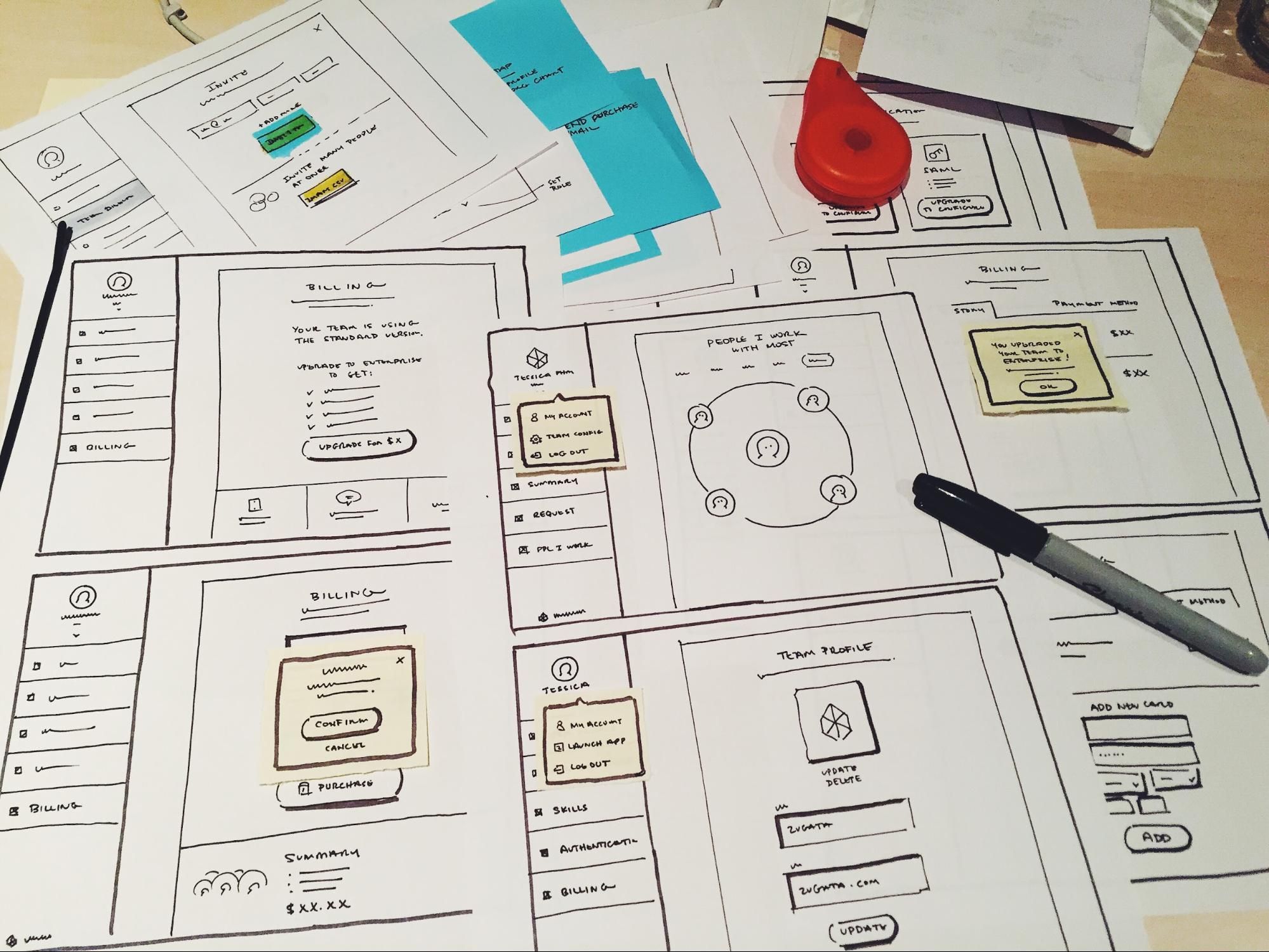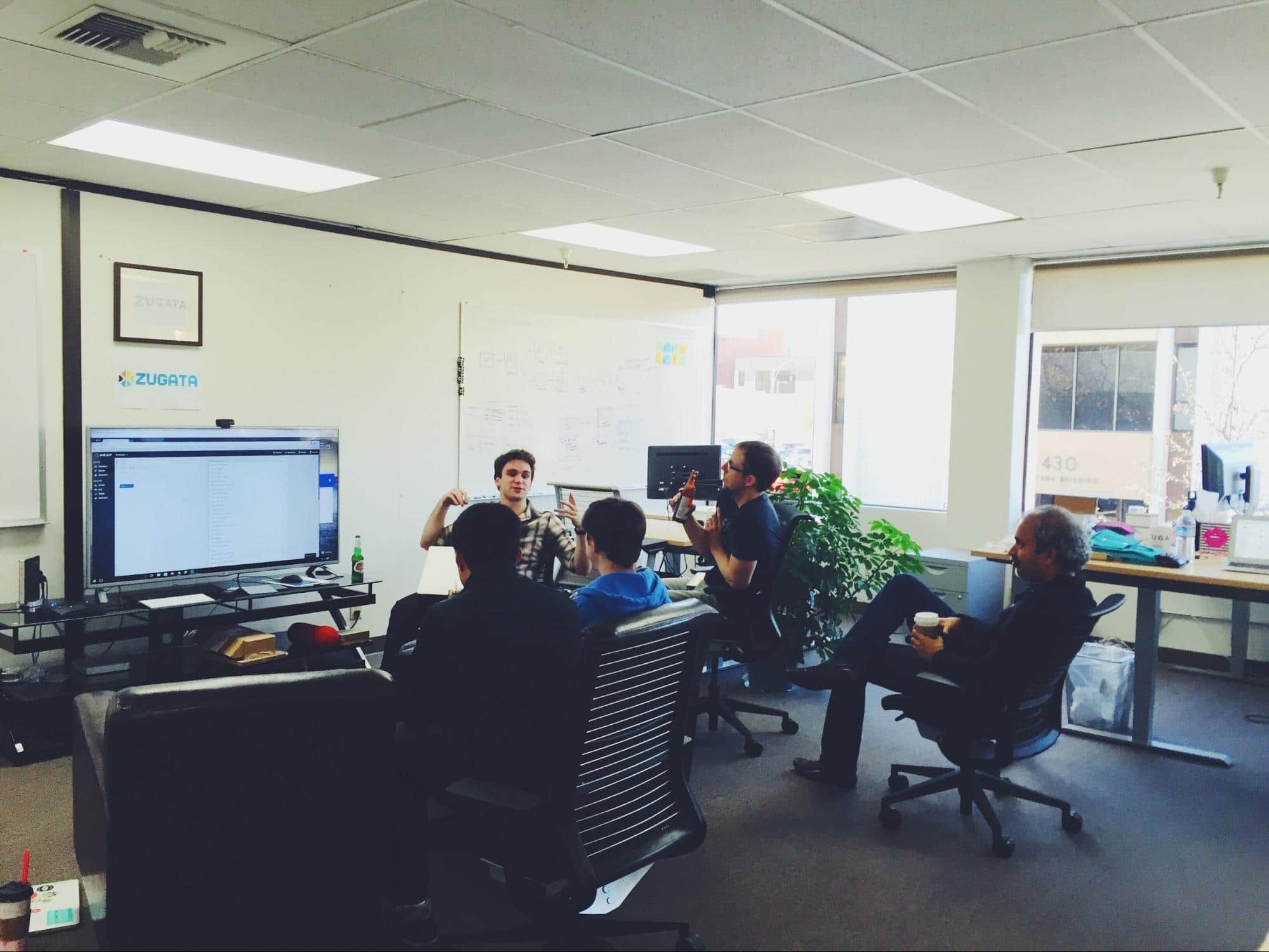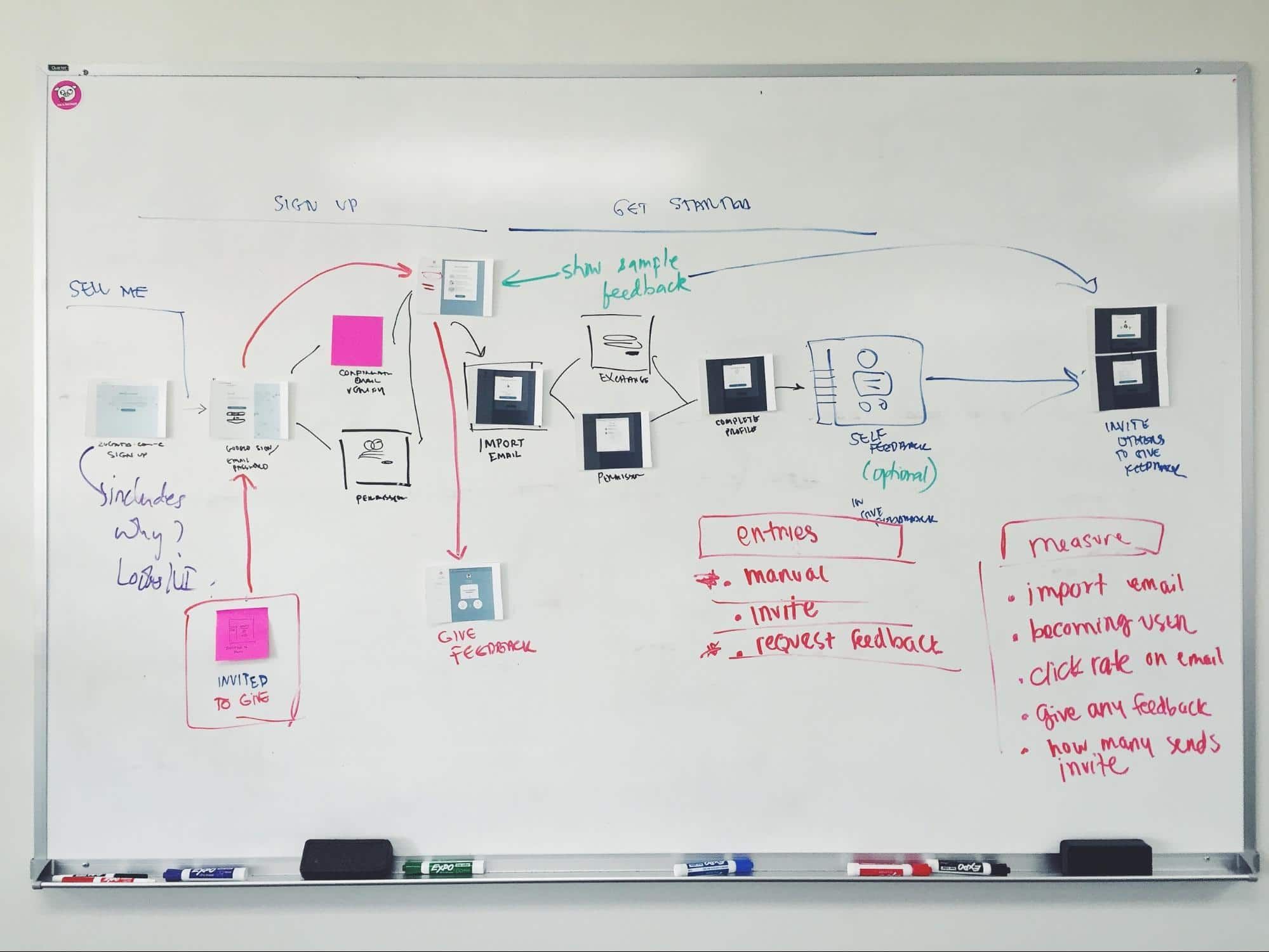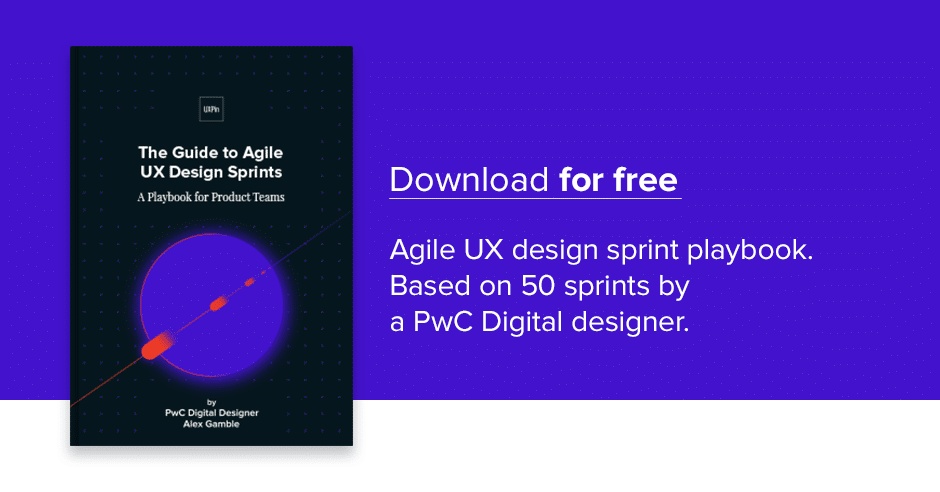With Square reinventing the frustrating experience of payment, Nest reimagining dull thermostats, and Uber creating frictionless commuting experiences, we see many designers migrating into these design-centric startups.
The momentum, the speed and the vision to re-imagining the way we live make startups an appealing environment for designers. But this fast-pace environment could happen anywhere. Whether you are a tiny startup or a large company, the key is just good habits.
While working at ZURB (a product design agency), I had the chance to advise companies of all sizes on better design and better processes. Since then, I picked up five approaches that I’ve continued using here at Zugata (an early stage startup reimagining performance reviews).
These five habits help our team design effectively and efficiently in a lean startup.
1. Start with sketches.

Sketching low fidelity wireframes at Zugata
Early in my career, I was one of those designers who went straight to the computer to make something. I found myself wasting hours pushing pixels back and forth, rather than solving the actual design problem.
It wasn’t until I started working at ZURB that I learned the importance of sketching. On my very first project, my design lead told me to deliver 50 opportunity sketches. It was a struggle to get fifty ideas on paper, but I noticed I was able to generate bigger concepts and innovative ideas more quickly. With more practice, the 50 sketches became an easy task, and it is now my favorite part of the design process.
I’ve seen companies share their “different” design concepts. But you always knew they started on their computer, because the only differences were color and typeface changes, rather than different concepts. When you place your computer aside and simply start on paper, you become agile with your thinking.
The more you sketch, the more you free your mind to reveal innovative ideas without judgment.
Start on paper by:
- Sketching notes and opportunities
- Sketching journey maps to convey your product story
- Sketching low fidelity layouts to replace static wireframes
2. Time box your tasks.
After my design lead challenged me to 50 sketches, he then challenged me to do it all within an hour. I whined in my head before I headed to battle with time.
We battled with time for just about everything at the ZURB. If we needed to sketch, create wireframes, explore visuals, code up pages, we time boxed it.
Time boxing is when you set a time limit to complete specific tasks. It is the best way to stay focused, become lean and mean, and improve your productivity. Being the designers that we are, it also helps us avoid obsessing over unnecessary details, which is another reason we tend suffer with designer’s block.
If time pressure isn’t enough to motivate you to complete your task, add rewards upon completion. It could be a walk around the block to get some fresh air, a freshly-brewed cup of coffee, or a box of chocolate. A reward system also helps you find a balance between work and rest, allowing you to accomplish more.
Exercise your time boxing skills by:
- Setting your timer for specific tasks
- Creating daily milestones
- Practicing 1-week design sprints
3. Share your work early and often.

Sharing work on Demo Days at Zugata
While at ZURB, I worked with a broad range of companies. Most had a siloed design process—especially the larger ones.
It was painful to see teams not communicating with each other, employees not knowing what is going on holistically, and stakeholders refusing to sign off on ideas. In the end, people got frustrated, nothing got done, and hours were wasted. It was a complete mess.
As designers, we should be that guiding light. We start by sharing our designs early and often. Most of the time, we fail by waiting until the last minute to show our polished high fidelity mockups to our stakeholders.
While we should hone our design craft, dot all our I’s and cross our T’s, these pixel-perfect mockups should be shown last.
First, share your early thought process. From sketches, workflows, storyboards, lo-fidelity mockups—show everything and be transparent to provide clarity and help others understand our reasoning and design decisions.
Other ways you could be transparent in your design process are:
- Making standup a tradition; communicate what you did yesterday and what you’re planning to work on today
- Capturing key takeaways and insights from your design process, then share them via Slack, Email, or UXPin
- Hosting demo days for sharing your latest designs
4. Everyone pitches in.

Brainstorming with the founders and engineers on the Zugata signup flow
While it is easier and more fun to collaborate with like-minded designers, remember to invite non-designers into the mix.
At our startup, we regularly collaborate with our engineers, data scientists, and founders by discussing problems and brainstorming solutions on whiteboards together. This helps us understand the problem from different perspectives, meaning we can work through those questions and problems much more quickly.
While working on a project at ZURB for a 100-year-old company with a huge team, we invited stakeholders from different departments to come together. It was immediately clear they were not on the same page for a lot of things. They were defensive with their own ideas, while close-minded to others. We took out the post-it notes, and asked them to write what makes their brand unique. After they were done, they shared their thoughts, added onto other ideas, and bucketed the ideas into themes. By the end of the meeting, they smiled at their whiteboard filled with post-it notes. The collaboration made them feel like they finally created the vision of the brand together.
As recommended in the free guide UX Design Process Best Practices, work together and create a collaborative culture by:
- Listing ideas with the team
- Brainstorming on whiteboards with the business team
- Hosting design sessions to share your design iteration and ask for feedback
- Participating in bug bashes with your engineers
5. Assume nothing until you’ve spoken to users.
Like time boxing, connecting with users will help you remain focused on key problems highlighted by the insights you gather. It is the most effective way to understand who they are, what is important to them, and what they need.
At Zugata, we’re building something that never existed before, meaning we don’t always have data to help with design decisions.
Where we don’t have data (such as the first version of a feature), we still have our users. We constantly reach out to them for feedback and insight. Reaching out helps us make decisions on different design hypotheses we may have as a team. And by hearing what they have to say, we can quickly identify what’s working and what isn’t through their tone, body language, and facial expressions.
Throughout your process, connect with your users by:
- Coordinating surveys to gather feedback from users
- Asking users to walk you through a few tasks
- Share your early prototypes with your users to get feedback
- Interviewing users to understand their needs
Conclusion
While being scrappy, nimble, transparent, collaborative, and empathetic helps you design effectively and efficiently at a startup, there is still one thing you need that cannot be trained.
Passion.
If you’re going to spend hours solving, iterating, and shipping, do it on something you’re passionate about. That passion will give you the energy and motivation to climb ladders, jump hurdles, and design great things at a startup.
Remember, “nothing great in the world has been accomplished without passion.” Let’s make great products, disrupt industries and re-envision better ways to live.
For more advice on lean design, check out the free Guide to Agile UX Design Sprints. The 97-page playbook is based on 50 design sprints conducted by author and designer Alex Gamble.



